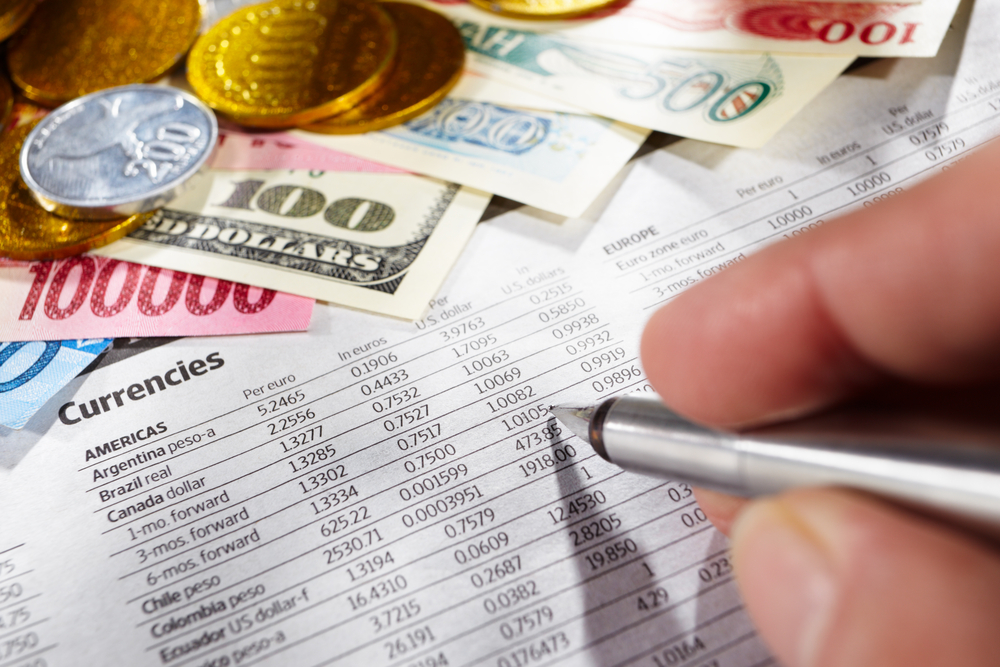Foreign Currency Markets and Exchange Rates
Definitions and Basics
Foreign Exchange, from the Concise Encyclopedia of Economics
The foreign exchange market is the market in which foreign currency—such as the yen or euro or pound—is traded for domestic currency—for example, the U.S. dollar. This “market” is not in a centralized location; instead, it is a decentralized network that is nevertheless highly integrated via modern information and telecommunications technology.
Exchange Rates, a lesson plan at EconEdLink
Students describe and identify where certain items they own come from and the approximate price of these items. They learn that to purchase an imported item they have to pay the people from whom they bought the item in their country’s currency. Moreover, if they want to travel to another country, they have to pay for the goods and services they buy in that country’s currency. Students calculate foreign exchange rates and derive an equation to convert prices for goods in one country’s currency compared with another.
Foreign Currency and Foreign Exchange, lesson plan from the Foundation for Teaching Economics
Currency Exchange: Floating Rate versus Fixed Rate, from Investopedia.com
There are two ways the price of a currency can be determined against another. A fixed, or pegged, rate is a rate the government (central bank) sets and maintains as the official exchange rate. A set price will be determined against a major world currency (usually the U.S. dollar, but also other major currencies such as the euro, the yen or a basket of currencies). In order to maintain the local exchange rate, the central bank buys and sells its own currency on the foreign exchange market in return for the currency to which it is pegged….
Unlike the fixed rate, a floating exchange rate is determined by the private market through supply and demand. A floating rate is often termed “self-correcting,” as any differences in supply and demand will automatically be corrected in the market. Look at this simplified model: if demand for a currency is low, its value will decrease, thus making imported goods more expensive and stimulating demand for local goods and services. This in turn will generate more jobs, causing an auto-correction in the market. A floating exchange rate is constantly changing….
In the News and Examples
Capital Flight, from the Concise Encyclopedia of Economics
There is no widely accepted definition of capital flight. The classic use of the term is to describe widespread currency speculation, especially when it leads to cross-border movements of private funds that are large enough to affect national financial markets. The distinction between “flight” and normal capital outflows is thus a matter of degree, much like the difference between a “bank run” and normal withdrawals. The most common cause of capital flight is an anticipated devaluation of the home currency. No one wants to be caught holding assets that lose 20 or 30 percent of their value overnight, so everyone tries to buy gold or foreign currency….
A Little History: Primary Sources and References
Gold Standard, from the Concise Encyclopedia of Economics
The gold standard was a commitment by participating countries to fix the prices of their domestic currencies in terms of a specified amount of gold. National money and other forms of money (bank deposits and notes) were freely converted into gold at the fixed price. England adopted a de facto gold standard in 1717 after the master of the mint, Sir Isaac Newton, overvalued the silver guinea and formally adopted the gold standard in 1819. The United States, though formally on a bimetallic (gold and silver) standard, switched to gold de facto in 1834 and de jure in 1900….
Bryan’s “Cross of Gold” Speech: Mesmerizing the Masses, at History Matters. Transcript and audio!
The most famous speech in American political history was delivered by William Jennings Bryan on July 9, 1896, at the Democratic National Convention in Chicago. The issue was whether to endorse the free coinage of silver at a ratio of silver to gold of 16 to 1….
“You shall not crucify mankind upon a cross of gold.”
Advanced Resources
Currency Exchange Introduction, at Khan Academy
Pedro Schwartz, Sound Money through Monetary Competition, at Econlib, May 2015
A sound currency is a necessary condition for people safely making the free choices that lead to sustained growth. Sadly, however, sound money seems to be beyond the ingenuity of most countries.
Ibsen Martinez, Latin America and the Great Depression, at Econlib, August 2009
The initial Latin American response to the collapse of 1929 was the orthodox reaction under a gold-standard exchange rate system…
The abandonment of gold standard rules after 1931 led to a series of debt defaults throughout the region. Depreciation of the exchange rate made the burden of the debt on the budget simply intolerable.
Studies in the Theory of International Trade, by Jacob Viner on Econlib
Economic history of international trade with a focus on mercantilism, the gold and silver bullion standards, and comparative advantage.
The History of Bimetallism in the United States, by J. Laurence Laughlin on Econlib
Economic history of the gold and silver standards at the end of the 19th century.
Related Topics
Monetary Policy and the Federal Reserve

